Introduction
In the far reaches of our solar system, Neptune planet reigns as the enigmatic ice giant, shrouded in mystery and captivating the imagination of astronomers and space enthusiasts. This distant gas giant, with its peculiar features and unique characteristics, stands as a testament to the cosmic wonders that our universe holds. Let’s delve into the realm of Neptune and uncover its secrets.
Orbital Properties
Orbit: Neptune resides as the most remote of the major planets, orbiting the Sun at an astonishing average distance of about 4.5 billion kilometers (2.8 billion miles). It is the very definition of a distant neighbor. Rotation In the realm of rapid rotators, Neptune exhibits a brisk spin, completing one full rotation on its axis in approximately 16 hours and 6 minutes.
Physical Characteristics
Size: With a diameter measuring roughly 49,244 kilometers (30,598 miles), Neptune is the fourth-largest planet by diameter in our solar system. To put this in perspective, it is approximately four times wider than Earth.
Composition: Neptune earns the classification of an “ice giant,” akin to its sibling Uranus. The title stems from its substantial composition of elements like water, ammonia, methane, and a noteworthy quantity of hydrogen and helium. The notable distinction between ice giants and their gas giant counterparts, Jupiter and Saturn, is the relatively higher concentration of substances beyond hydrogen and helium.
Atmosphere
Atmosphere: Neptune’s atmosphere predominantly comprises hydrogen and helium, with traces of methane, ammonia, and other compounds. It is the presence of methane in the upper layers that imparts Neptune’s distinctive azure hue.
Great Dark Spot: Storm systems churn in Neptune’s atmosphere, evoking comparisons to the tempestuous regions on Jupiter. The “Great Dark Spot,” Neptune’s most renowned atmospheric feature, was observed during the Voyager 2 spacecraft’s visit in 1989. Regrettably, the storm had dissipated by subsequent observations with the Hubble Space Telescope.
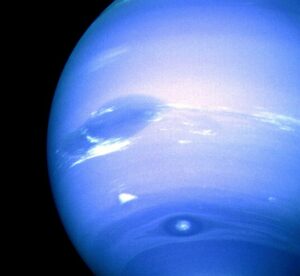
Moons
Moons: Neptune commands a retinue of moons, with 14 confirmed and several provisionally identified. Among these, Triton reigns supreme as the most substantial and intriguing. Triton’s distinctiveness lies in its retrograde orbit, suggesting it may have been ensnared by Neptune’s gravitational pull in the distant past.
Notable Features of Neptune Planet
Rings: Much like its fellow gas giants, Neptune boasts a modest ring system. However, its rings are subtly drawn, comprising narrow rings and partial rings populated with ice particles and cosmic dust. These rings, while less conspicuous than Saturn’s, contribute to the planet’s allure.
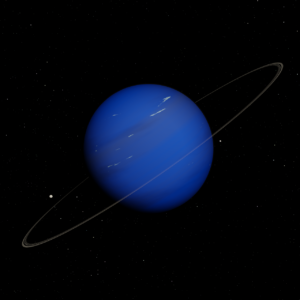
Exploration of Neptune Planet
Voyager 2: In the annals of interplanetary exploration, NASA’s Voyager 2 spacecraft etched its name by conducting a momentous flyby of Neptune in 1989. This historic encounter bequeathed a trove of invaluable data and mesmerizing images that enriched our comprehension of the distant ice giant, its delicate ring system, and its captivating moons.
Conclusion
Neptune planet, with its distant abode and limited exploration, remains an alluring enigma of our solar system. As we continue to probe the universe’s depths, the tantalizing mysteries of this ice giant beckon for further investigation, promising to unravel the secrets of this remote world.
FAQs
Q: What is the temperature on Neptune?
A: Neptune, being a gas giant, has extreme temperatures. Its average temperature is around -353 degrees Fahrenheit (-214 degrees Celsius). It is one of the coldest planets in our solar system.
Q: How long is a day on Neptune?
A: A day on Neptune is significantly shorter than a day on Earth. Neptune has a rapid rotation, completing one full rotation on its axis in about 16 hours and 6 minutes.
Q: Is there life on Neptune?
A: Life, as we know it, is highly unlikely to exist on Neptune. The extreme cold, lack of a solid surface, and harsh atmospheric conditions make it inhospitable for known forms of life. Moreover, Neptune is a gas giant with no solid surface for life to take root.
Q: What makes Neptune blue?
A: Neptune appears blue due to the presence of methane in its atmosphere. Methane absorbs red light and reflects blue light, giving the planet its characteristic blue hue. The exact mechanisms behind the coloration involve complex interactions between different atmospheric components.
Q: How far is Neptune from Earth?
The distance between Earth and Neptune varies as both planets orbit the Sun. On average, Neptune is about 2.7 billion miles (4.35 billion kilometers) away from Earth. This distance can change as both planets follow their respective orbits around the Sun.
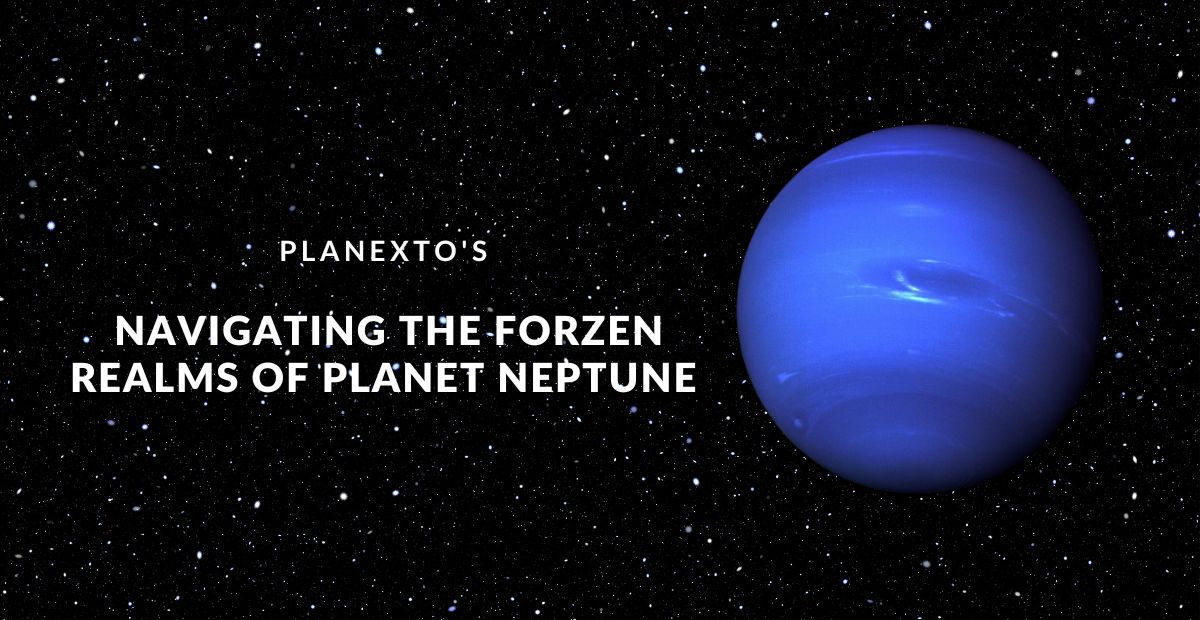





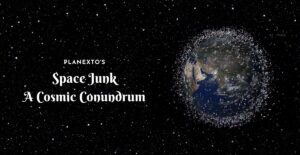
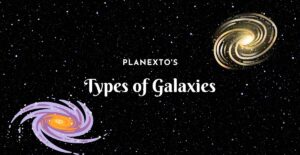

1 thought on “Neptune Planet: Tales from Neptune’s Frozen Realm”